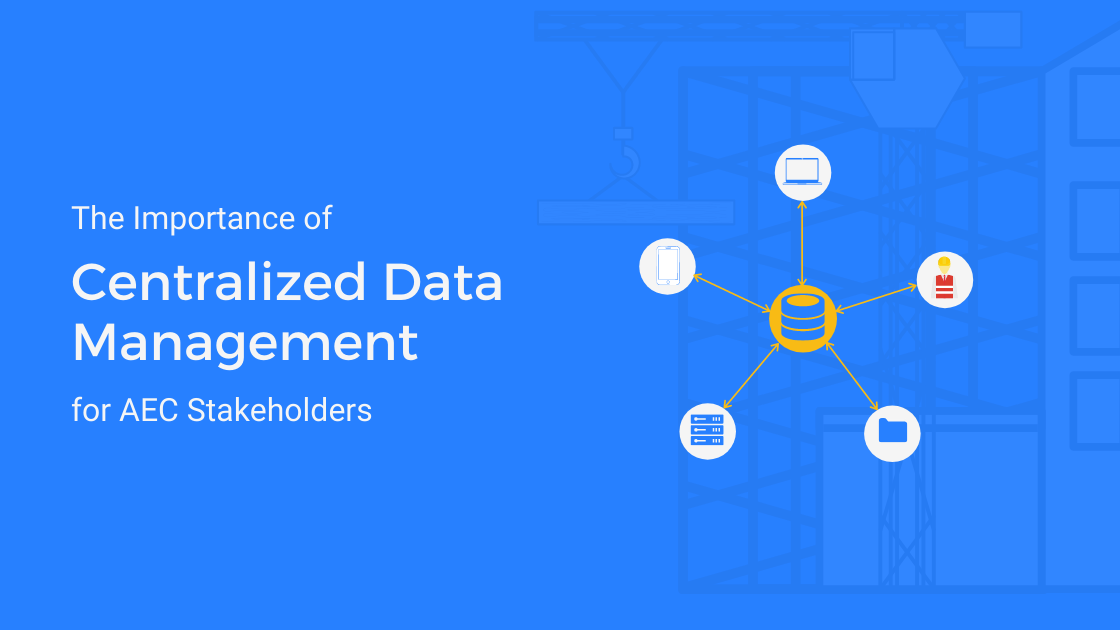The Importance of Centralized Data Management for AEC Stakeholders
Although it isn’t one of the most used terms on construction sites, data management is extremely relevant for the AEC industry, where a diverse and dispersed group of professionals need to share information, to ensure their jobs are done in the best, most efficient ways possible and that all goals are attained. From registering plans and documentation, to contributing with information, such as measurements, project steps, quantities etc., all the stakeholders actively involved in a project play a significant role in data management, as owners, generators and keepers.
The fact that, in construction, so many entities, which use different digital tools and touchpoints, drive, collect and distribute data, makes its management even more challenging. Still, this is an issue that stakeholders realize only when things go wrong, and, thus, processes fail, inefficiency increases and resources are lost along the way.
Benefits of centralized data management in construction
It is in this context that managing data in a central location needs to be considered, as it fosters a series of benefits, such as.
Streamlining workflows
A streamlined data management process that is used throughout the project’s deployment increases its efficiency and quality, ensuring that all stakeholders adjust to changes and dynamic data. This means that everything is more accessible, as the project site doesn’t have to rely on paper plans and that those involved have the necessary information to take decisions and put things in practice.
Standardizing end user experience
As important as it may appear, construction is merely a phase in a building’s life cycle, but the way data management is approached during this process impacts how the project is run for years to come. A good strategy enables the property’s end users to standardize processes and flows, increasing their teams’ efficiency.
Having access to information from the development phase of the project means that each time something gets broken or an error occurs, the person responsible for finding a solution may check the history of key pieces and analyze information, to understand what was previously done there.
Improving capabilities for data auditing
Centralized data management helps construction companies collect and analyze information from different projects, so that contractors may assess their projects and understand what they may improve about them. This means that, in the long run, increased productivity and profitability may be achieved.
Allowing integration between systems
As mentioned before, centralized data management means that paper documentation is no longer needed on the job site, but this is a change which comes with its share of risks. Since different stakeholders use different touchpoints and tools, integration between systems is mandatory.
Controlling what are the terms for data visualization and usage
Each professional on the jobsite has its share of responsibilities and necessities, so it may require a different set of information. Centralized data management allows administrators to set different access rights, so that professionals have what they need, without breaching security or confidentiality.
Options for centralized data management
The fact is that, the larger the organization, the more important it is for centralized data management solutions to be implemented. To do so, there are several options, as companies may either opt for a 100% cloud model or for the hybrid alternative, where some applications are running in-house and others are cloud-based.
No matter the approach chosen, there are two big priorities for companies trying to adopt a centralized data model: to have all the data organized in a safe place, with optimized costs, and to ensure it is made available to project teams, business intelligence reporting, legal, system integration and much more.
Case study: As-Built solutions delivered for one of the world’s top general contractor
At AEC Cloud, we have experience working with top clients. Our first project of implementing an unified application management system was deployed in 2005, when we worked for one of the world's largest and most respectable General Contractors.
The challenge they brought to our attention was that their software applications were distributed across jobsites and accessible from different touchpoints, with different login credentials and other inefficient methods of access. The objective, then, was to create a seamless ecosystem, which brought together over 30 business applications. We, thus, unified all these in a way that created a single point of management. We did so by introducing our client to the benefits of the cloud and by using TCG Portal for Unified Application Management, white labeled for client branding, with Integration Packs to support various applications.
The solution is still in place today, and it requires little maintenance.
To read the full case study, as well as others, we invite you to access our dedicated post.
Why you should start working on a centralized data management system today?
At AECCloud, we know from our experience that, with a cloud-based model, centralized data management becomes smoother and resource-efficient, allowing professionals to focus on developing capabilities that help the organization move forward, while implementing modern technologies.
If you want to assess what the best solution is for your company, contact us and together we will identify the best strategy for you.

